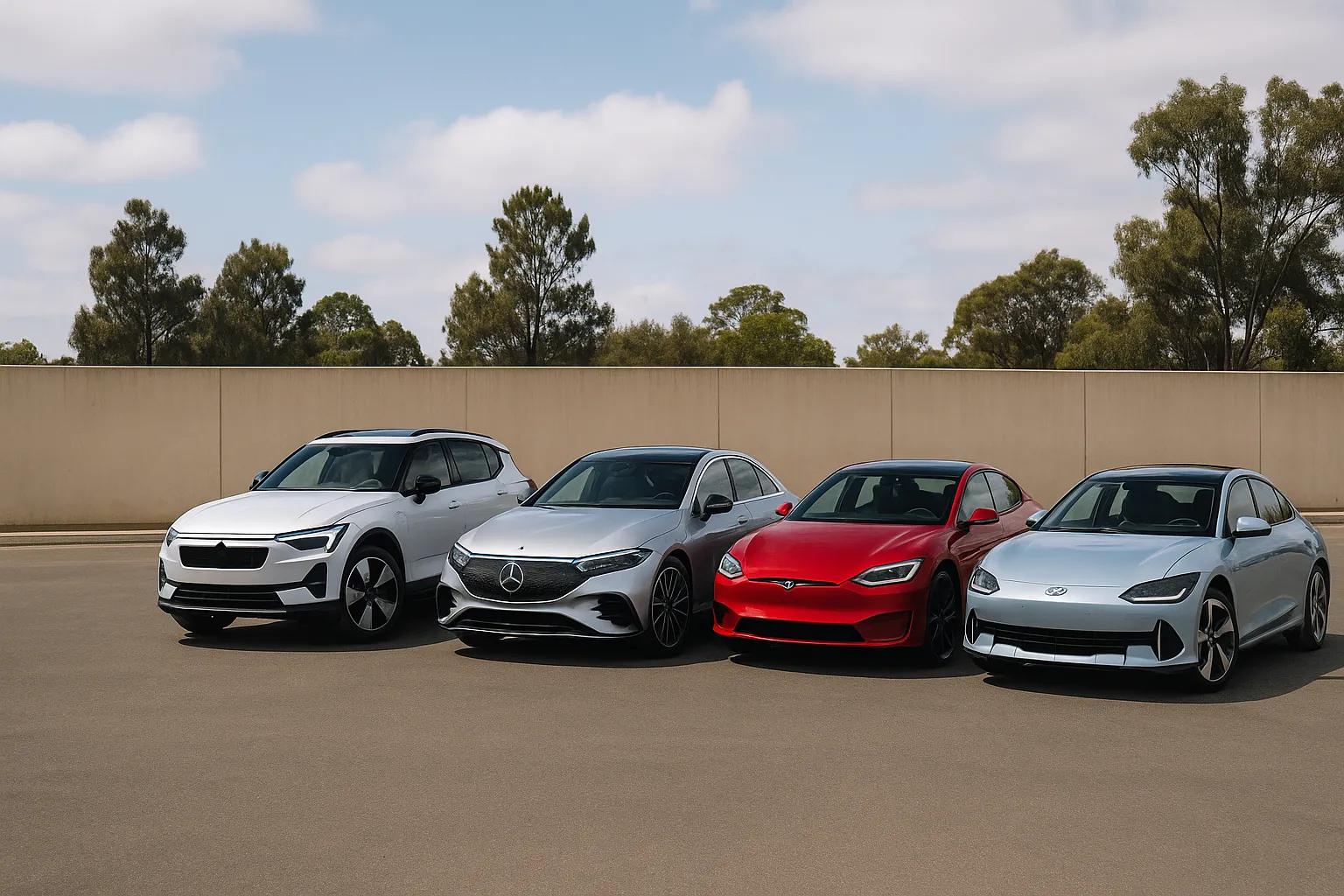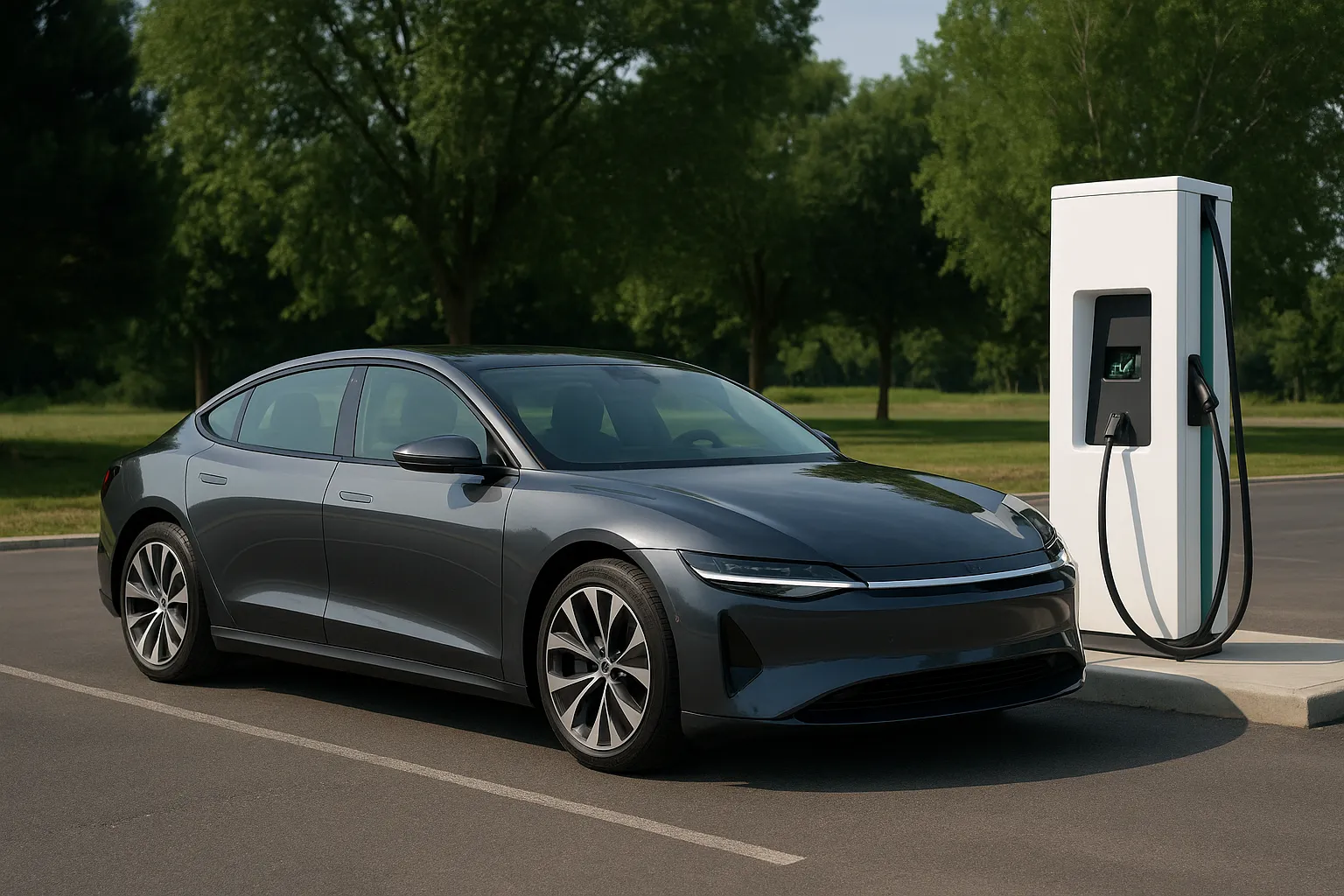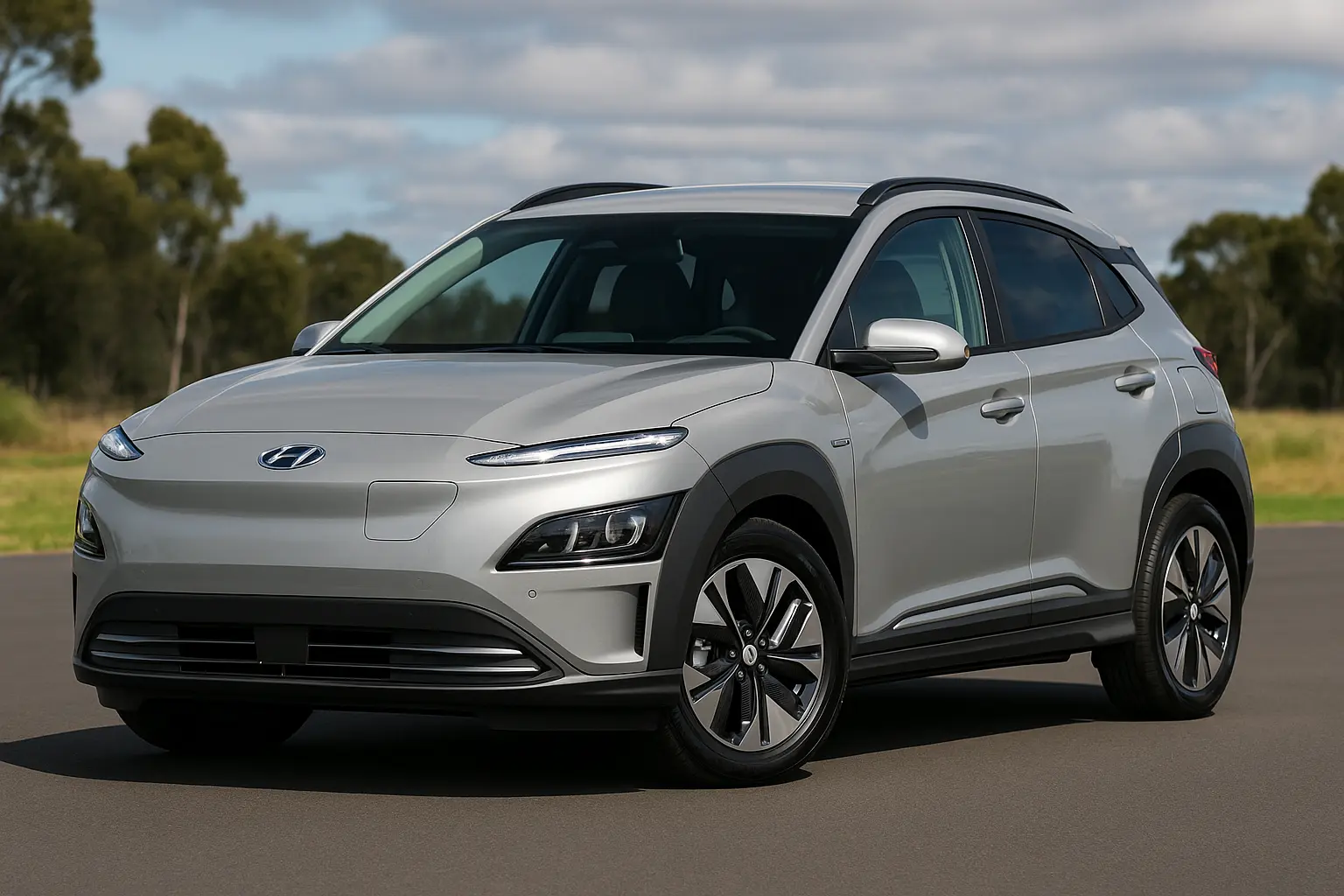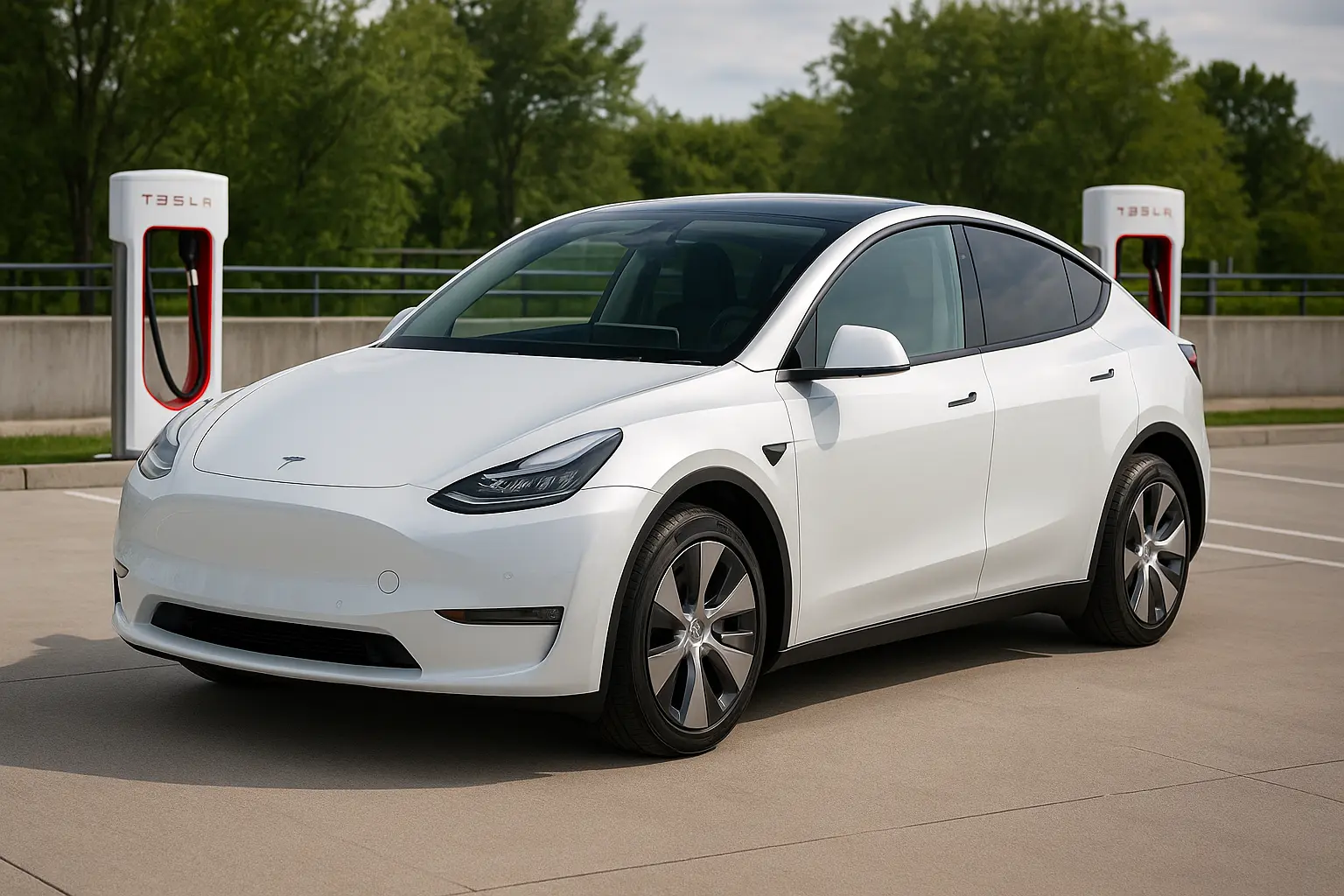Introduction: Why Range Matters in Australian EV Choices
In a country as vast as Australia, range anxiety remains one of the most significant barriers to EV adoption. Whether you're commuting in the city, planning a cross-state road trip, or navigating long stretches of outback roads, range matters. Fortunately, 2025 brings some exciting electric vehicles (EVs) with exceptional real-world driving ranges that can rival, or even exceed, traditional petrol-powered cars.
This updated list dives into the top 5 EVs available in Australia in 2025 with the longest range, comparing real-world performance, battery sizes, efficiency, pricing, and driving tech that makes them the top contenders for Aussie drivers.

How We Ranked the Top 5 EVs for Range in 2025
We considered:
- Real-world range (not just WLTP figures)
- Battery capacity
- Energy efficiency (Wh/km)
- Charging infrastructure compatibility
- Price-to-range ratio
- Availability in Australia
- Consumer feedback and expert reviews
1. Tesla Model S Long Range – The Range King
Estimated Real-World Range: 660 km
WLTP Range: 723 km
Battery Capacity: 100 kWh
Price (AUD): From $160,000+
Vehicle Type: Premium Sedan
Why It Leads the Pack
The Tesla Model S Long Range remains unbeatable when it comes to all-out distance. With over 700 km of WLTP-tested range and a real-world performance nearing 660 km per charge, it’s the EV of choice for road-trippers and luxury enthusiasts.
The Model S doesn’t just offer range—it comes with Tesla’s cutting-edge Autopilot, OTA updates, and one of the best charging networks via Tesla Superchargers. It also delivers sports car performance, hitting 0-100 km/h in just 3.2 seconds.
Pros
- Longest real-world range in Australia
- Tesla Supercharger access
- Premium tech and software
Cons
- Expensive
- Limited service network outside major cities
2. Lucid Air Pure AWD – The New Contender
Estimated Real-World Range: 640 km
WLTP Range: ~725 km
Battery Capacity: 88 kWh
Price (AUD): Estimated $150,000+ (pending full local release)
Vehicle Type: Luxury Sedan
Why It’s on the List
Lucid Motors has finally brought its flagship sedan to Australia in 2025, and it's already making waves. The Lucid Air Pure AWD offers exceptional efficiency, luxurious design, and next-gen features that challenge Tesla’s dominance.
Thanks to ultra-efficient motor design and aerodynamic shaping, it squeezes out range figures that are class-leading for its battery size. It also supports 900V ultra-fast charging, ideal for future-ready Aussie EV drivers.
Pros
- Highly efficient and aerodynamic
- Advanced charging tech (350kW capable)
- Spacious interior with luxurious finish
Cons
- Expensive and less known brand
- Service and support still developing locally
3. BMW iX xDrive50 – Premium SUV With Exceptional Range
Estimated Real-World Range: 590–610 km
WLTP Range: 630 km
Battery Capacity: 111.5 kWh
Price (AUD): From $155,000
Vehicle Type: Luxury SUV
Why It Stands Out
The BMW iX xDrive50 proves that electric SUVs can have both size and stamina. This large SUV doesn’t compromise on luxury, tech, or practicality, offering an impressively high range for its size.
It’s packed with BMW’s latest iDrive 8.5, Level 2 driver assist features, and premium interior materials. Unlike many performance EVs, the iX is tuned for maximum comfort and long-haul travel.
Pros
- Huge battery for long trips
- Quiet, refined ride
- Futuristic design and interior
Cons
- Pricey
- Charging speed could be better (max 195 kW)
4. Hyundai Ioniq 6 Extended Range – Efficient Sedan Option
Estimated Real-World Range: 580–600 km
WLTP Range: 614 km
Battery Capacity: 77.4 kWh
Price (AUD): From $74,000
Vehicle Type: Mid-Sized Sedan
Why It’s a Game-Changer
Hyundai’s Ioniq 6 is one of the most energy-efficient EVs on the road today. With a sleek, Porsche-inspired design and aerodynamic drag coefficient of just 0.21, it delivers excellent range despite having a smaller battery compared to luxury rivals.
Built on Hyundai’s E-GMP platform, it supports 800V fast charging (up to 350 kW) and includes V2L (vehicle-to-load) capabilities, making it practical and tech-forward.
Pros
- Great value for range
- Fast charging support
- Elegant styling and smooth ride
Cons
- Rear headroom slightly tight
- Interior design won’t suit all tastes
5. Mercedes-Benz EQE 300 – German Engineering Meets Efficiency
Estimated Real-World Range: 570–590 km
WLTP Range: 620 km
Battery Capacity: 89 kWh
Price (AUD): From $134,000
Vehicle Type: Luxury Executive Sedan
Why It Made the Cut
The Mercedes-Benz EQE 300 is an executive electric sedan that balances range, refinement, and comfort. It uses Mercedes' modular EVA platform and offers one of the smoothest rides in its segment.
The EQE is more focused on luxury and efficiency than performance, which is why it delivers a strong range figure for an executive saloon. The MBUX Hyperscreen and ambient lighting complete the futuristic vibe.
Pros
- Refined driving experience
- Excellent real-world range
- Well-suited for long-distance commutes
Cons
- High starting price
- Lower performance than other premium EVs
Honourable Mentions
1. Polestar 2 Long Range Single Motor
- Real-World Range: ~520–550 km
- Affordable, efficient, and stylish Scandinavian design.
2. Kia EV6 GT-Line RWD
- Real-World Range: ~530 km
- High practicality, V2L capability, 800V fast-charging.
3. Tesla Model 3 Long Range
- Real-World Range: ~560 km
- Sleek sedan, improved LFP batteries in 2025 version.
Factors That Affect EV Range in Real-World Aussie Conditions
Range figures are often based on WLTP or EPA testing cycles that may not reflect real driving in Australia. Here’s what affects range:
- Hot climates can reduce battery efficiency
- Highway speeds drain energy faster than city driving
- AC/heating use can consume up to 15% more battery
- Payload and passengers add drag and weight
- Driving style – aggressive acceleration = lower range
Charging Infrastructure: Range Is Only Part of the Equation
With Australia rapidly expanding its public charging infrastructure (NRMA, Chargefox, Evie, Tesla Superchargers), long-distance EV driving is easier than ever. However, if your area lacks high-speed DC chargers, an EV with a longer range helps bridge the gap.
Make sure your chosen EV supports:
- DC fast charging (preferably 150kW+)
- Type 2/CCS2 compatibility (standard in AU)
- Navigation with charge stop planning
What EV Range Do You Really Need?
It’s tempting to chase the highest numbers, but consider your real needs:
- Urban driving: 300–400 km is often sufficient
- Regional commuting: Aim for 500+ km to reduce charging frequency
- Outback travel: Choose 600+ km and dual-motor AWD options
Remember: A shorter range EV with faster charging can still beat a long-range EV that takes hours to recharge.
Buying Tips: Choosing the Right Long-Range EV in 2025
- Factor in on-road costs – Stamp duty, rego, and luxury car tax apply
- Check home charging compatibility – 7kW AC charger is ideal
- Test drive before buying – Range estimates can feel very different depending on cabin layout, comfort, and controls
- Look for incentives – Some states offer EV rebates or registration discounts
- Future-proof with V2L or bidirectional charging
Conclusion: Go the Distance in 2025 With the Right EV
If you're looking for an electric vehicle in Australia with impressive range, the choices in 2025 are better than ever. Whether you're after a premium sedan like the Tesla Model S or Lucid Air, a luxurious SUV like the BMW iX, or a value-packed model like the Hyundai Ioniq 6, there’s a long-range EV that fits your needs and lifestyle.
As infrastructure improves and EV tech advances, owning an EV is becoming more viable—even in Australia's remote and regional areas. It’s no longer just about range; it’s about total usability, charging convenience, and real-world ownership experience.
Leave a comment
Your email address will not be published. Required fields are marked *




